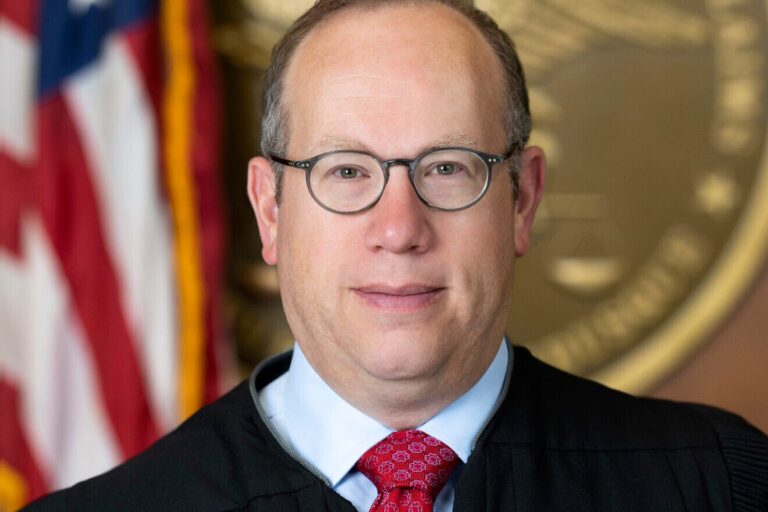Evictions, which have mostly been on pause during the pandemic, were expected to ramp up Monday after the Biden administration allowed the federal moratorium to expire over the weekend and Congress was unable to do anything to extend it.
Housing advocates fear the end of the Centers for Disease Control and Prevention moratorium could result in millions of people being evicted. But most expect the wave of evictions to build slowly over the coming weeks and months as the bureaucracy of removing people from their homes restarts.
On Sunday night, House Speaker Nancy Pelosi and the House Democratic leaders called on the Biden administration to immediately extend the moratorium, calling it a “moral imperative” to prevent Americans from being put out of their homes during a COVID-19 surge.
The Biden administration announced Thursday it would allow the ban to expire, arguing its hands were tied after the U.S. Supreme Court signaled the measure had to end.
“Struggling renters are now facing a health crisis and an eviction crisis,” said Alicia Mazzara, a senior research analyst at the Center on Budget and Policy Priorities.
“Without the CDC’s moratorium, millions of people are at risk of being evicted or becoming homeless, increasing their exposure to COVID just as cases are rising across the country. The effects will fall heavily on people of color, particularly Black and Latino communities, who face greater risk of eviction and more barriers to vaccination.”
More than 15 million people live in households that owe as much as $20 billion to their landlords, according to the Aspen Institute. As of July 5, roughly 3.6 million people in the U.S. said they faced eviction in the next two months, according to the U.S. Census Bureau’s Household Pulse Survey.
Parts of the South and other regions with weaker tenant protections will likely see the largest spikes and communities of color where vaccination rates are sometimes lower will be hit hardest. But advocates say this crisis is likely to have a wider impact than pre-pandemic evictions.
The Biden administration had hoped that historic amounts of rental assistance allocated by Congress in December and March would help avert an eviction crisis. But the distribution has been painfully slow. Only about $3 billion of the first tranche of $25 billion had been distributed through June by states and localities. Another $21.5 billion will go to the states.
Ashley Phonsyry, 22, who will be in court Thursday for an eviction hearing after falling several thousands dollars behind on her Fayetteville, Arkansas, two-bedroom apartment, said her landlord refused to take rental assistance. She left her job after being hurt in a domestic violence incident and suffering from depression and anxiety. The eviction hearing is a day after her domestic violence case goes to court.
“It frustrates me and scares me,” she said of being evicted. “I’m trying so hard to make it right and it doesn’t seem like it’s enough.”
Around the country, courts, legal advocates and law enforcement agencies are gearing up for evictions to return to pre-pandemic levels, a time when 3.7 million people were displaced from their homes every year, or seven every minute, according to the Eviction Lab at Princeton University.
In St. Louis, where the sheriff’s office handles court-ordered evictions, Sheriff Vernon Betts said 126 evictions had been ordered pending the end of the moratorium. His office plans to enforce about 30 evictions per day starting Aug. 9.
Betts knows there will be hundreds of additional orders soon. He’s already been contacted by countless landlords who haven’t yet filed for eviction, but plan to. And he expected to increase his staffing.
“What we’re planning on doing is tripling our two-man team,” he said. “Right off the bat we want to clean up that 126 evictions.”
Sgt. William Brown, who leads the evictions unit for the Milwaukee County Sheriff’s Office, expects many evictions to follow the end of the moratorium. He rattled off statistics that showed the steep decline in evictions since the pandemic began: nearly 4,000 in 2018 and 2019, then a plunge to about 1,900 in 2020.
“I think that once evictions are there fully, there’s no more moratorium in place, it’s going to get really bad,” he said.
“It’s the most challenging position that I’ve ever been in, because at the end of the day I have an empathy and sympathy. I’m required by state statute to execute this,” he said. “You have to feel for these people … watching small kids go through this, this entire process.”
Lee Camp, an attorney with the St. Louis legal group ArchCity Defenders, said the vast majority of tenants facing eviction don’t have lawyers, often because they can’t afford them. Meanwhile, he said, eviction cases move through the courts quickly in Missouri, often in a matter of weeks.
“The scales of justice are just at this incredible imbalance,” Camp said.
In Wisconsin, Heiner Giese, legal counsel for the Apartment Association of Southeastern Wisconsin, said his trade association for rental property owners in the Milwaukee area has been “very strong in urging our members and all landlords not to evict.”
“I pretty strongly believe from the feedback we get from our members in the Milwaukee area … there will not be this giant tsunami of (evictions),” Giese said.
Still, Colleen Foley, executive director of the Legal Aid Society of Milwaukee, said she “certainly” expects an uptick. She said 161 evictions were filed last week, a significant increase from prior weeks where filings tended to hover around 100 to 120.
(AP)











